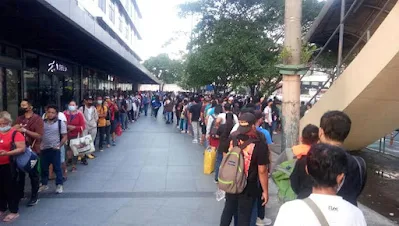To anyone who has experienced commuting around Metro Manila, this shouldn’t come as a surprise. The National Capital Region (NCR) ranks as one of the worst cities when it comes to its public transportation system based on a study compiled by the Oliver Wyman Forum and the University of California at Berkeley.
Among the 60 global cities ranked in the study, Metro Manila ranked 58th with only Nairobi and Lagos fairing worse. With a score of 31.2 percent, Metro Manila is well below the global average score of 53.7 percent (Asia-Pacific’s average is 51.9 percent).
The best-ranked Asian cities are Singapore (4), Tokyo (15), Hong Kong, 16), and Seoul (16). Meanwhile, other ASEAN cities ranked below the global average, but still managed to score better than Manila—Kuala Lumpur (40), Bangkok (44), Jakarta (46), Delhi (50), and Mumbai (52).
The study takes into account the following metrics to determine the ranking:
- Public mobility infrastructure: taking into account metrics such as walkability, pedestrian-friendliness, cycling infrastructure, public transit accessibility, public transit station density, and road quality.
- Social impact: including road safety, air quality, noise and light pollution, transit commute speed, and public transit affordability.
- Market attractiveness: including diversity of public transit modes, public transit operating hours, and transit estimated time of arrival.
- System efficiency: including existence of master plan, public transit utilization, car ownership moderation, cycling adoption, share of time in public transit, and natural hazard preparedness.
- Innovation: including quality of human capital and electric market share in sales.
The study also notes that in Metro Manila, “sustainable mobility is less of a priority and motorized vehicles are likely to remain the most common transit option.”
As COVID-19-related restrictions ease and more schools and offices now requiring students and workers to report onsite, commuters, pedestrians, motorists and transport workers continue to face long lines, crowding, heavy road congestion, transport malfunctions and other problems every day. The result, for many Filipinos, is a large chunk of their day and their energies devoted to traveling to and from work and school.
For its part, the Department of Transportation (DOTr) has accepted the report’s findings.
Lead photo courtesy of Commuters of Manila Facebook Page.


Love your own.
ReplyDeleteNo place like home.
With all its drudgeries and broken dreams and hard commutes, it still a beautiful place to live.
I think you missed the point of the study.
DeleteAnd this government doesn't care even if we're dead last so long as they're dead sure they'll earn from this country being the worst!
ReplyDeletepublic transportation is worst in the world its garbage just like the whole ugly
ReplyDeletecountry